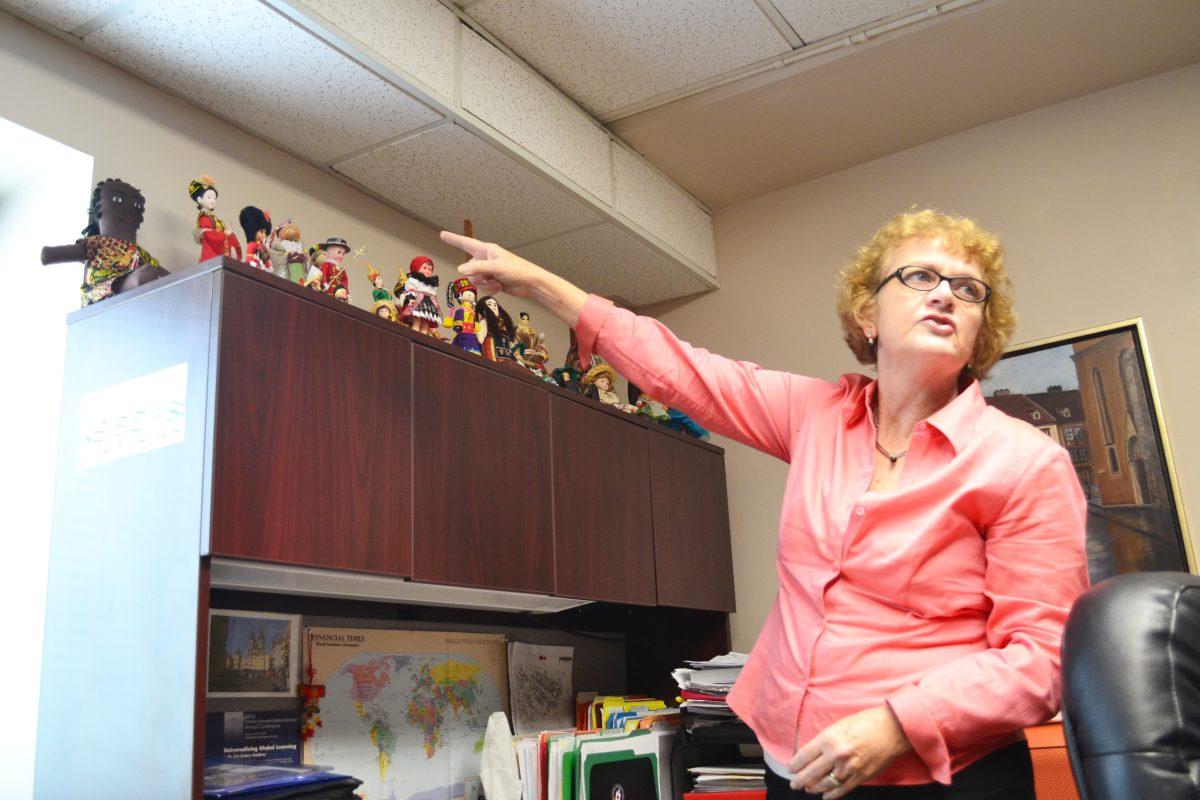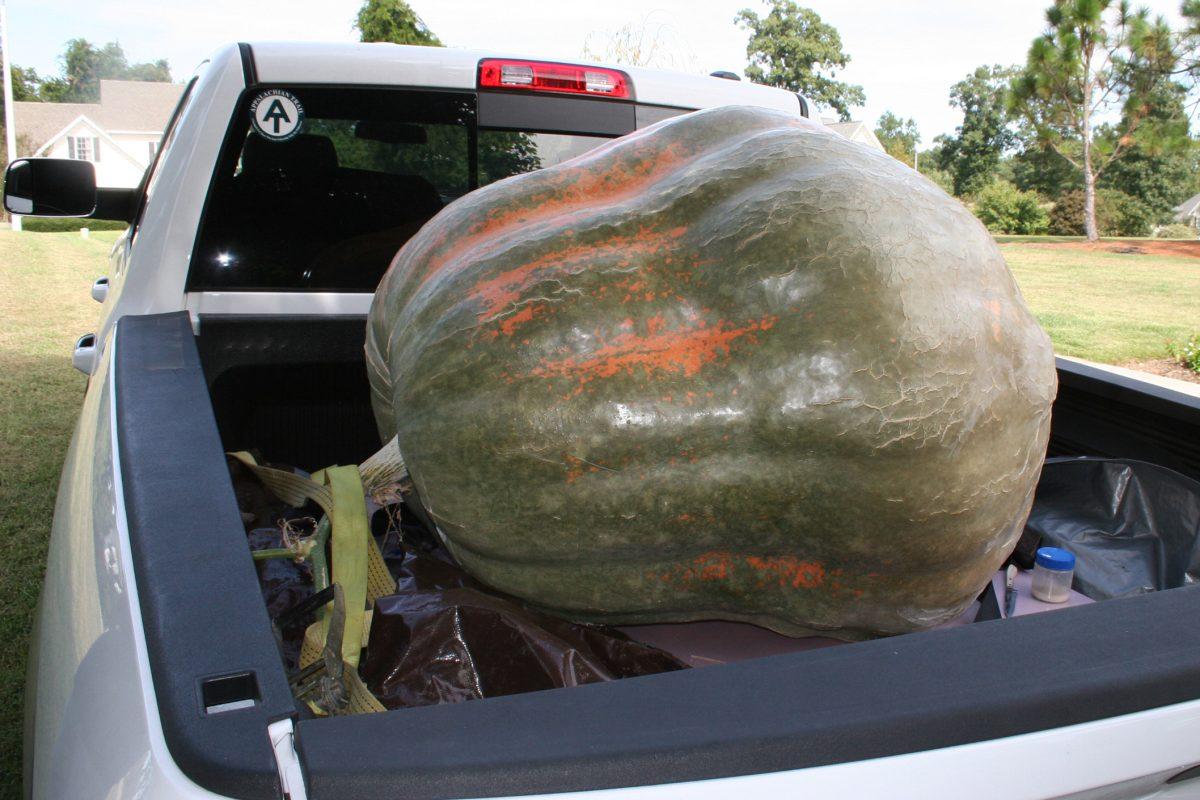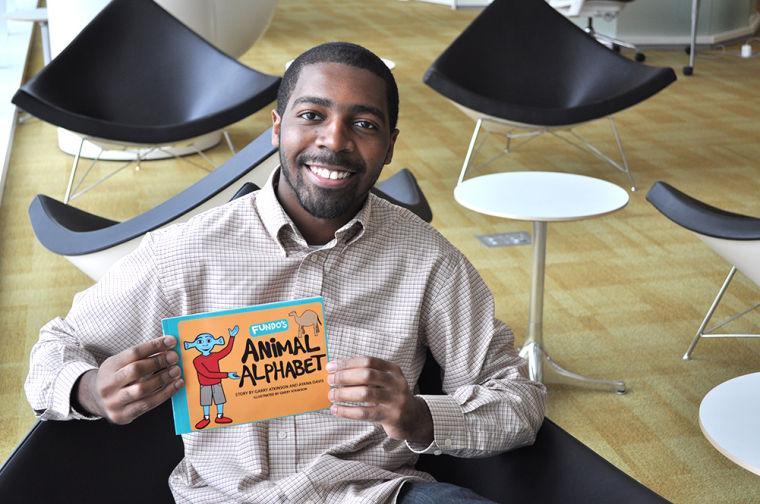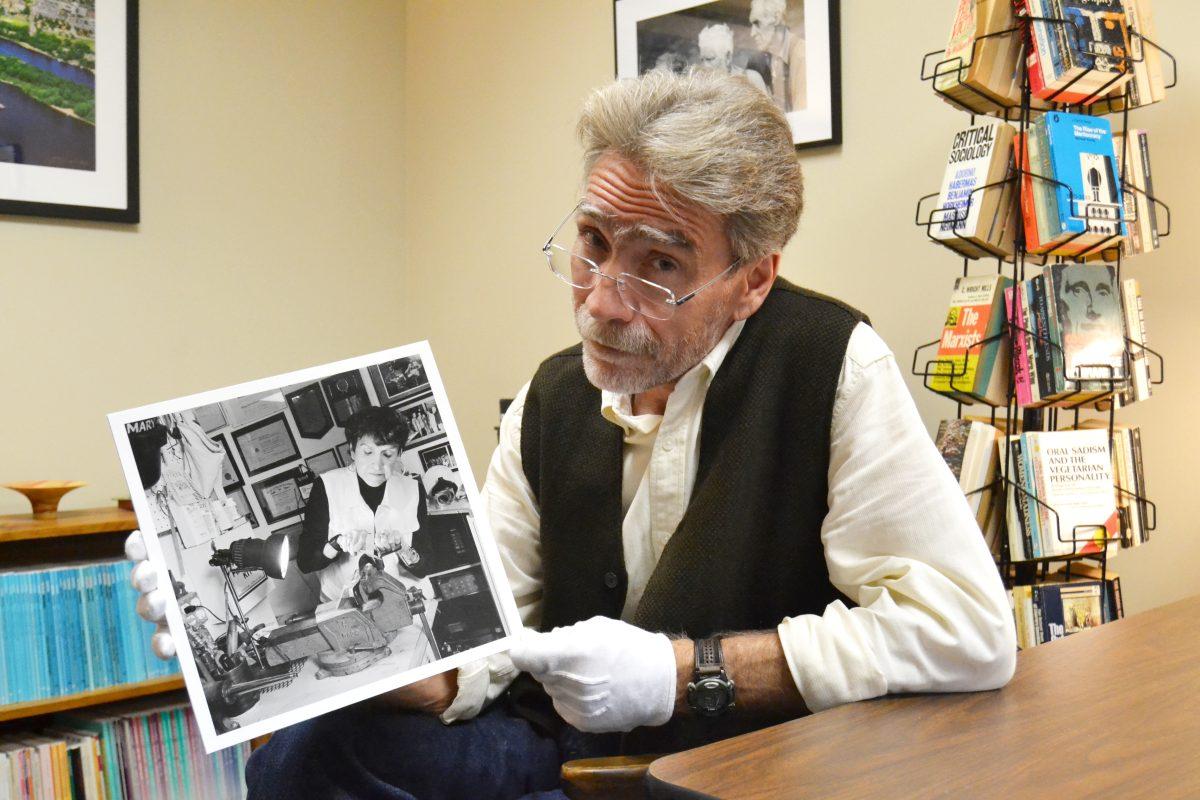Professors’ offices might as well be their homes away from home. Some keep their workspace simple—a desk, a chair and a few photos—others seize the opportunity to decorate the space. Below are a few professors and a look at how they enhance their workspaces.
Dennis Daley
In the office of Dennis Daley, professor of public administration, an array of stuffed animals adorned in academic regalia greets students from the back corner of the room.
While the plush toys may seem odd, Daley said they are there to help visiting students relax.
“Suddenly they see the stuffed animals, and it eases things a little and becomes a thing to start a conversation,” Daley said.
According to Daley, the academic regalia they wear symbolize the university atmosphere.
Next to Daley’s desk sits a stuffed The Sorcerer’s Apprentice Mickey Mouse.
“The sorcerer’s apprentice reminds me to not take my research so seriously,” Daley said.
Photos from around the world, illustrations of his travels, also line Daley’s walls as a means of interesting graduate and international students who stop by, according to Daley.
Daun Daemon
In Tompkins Hall, fish from the Cayman Islands hang from the ceiling of English senior lecturer Daun Daemon’s office suite. A large, blue tapestry of giraffes from Cape Town, South Africa, covers the wall.
Daemon even decorated her chair by draping a red and green patterned cloth from India over it.
“I like having items around me that make me happy,” Daemon said.
Walt Wolfram
A couple of doors down from Daemon’s office, a life-sized photo of Walt Wolfram, professor of English, in a fairy godmother costume from a Halloween party at Ocracoke Island greets visitors.
“Students dressed me up as the fairy godmother and took $20 from me to buy stuff from yard sales [to complete the costume],” Wolfram said.
Wolfram said he was impressed with the results, especially since they were able to find stockings and size 12 men’s slippers.
The photo used to be displayed on a stand in a corner across from the door, but Wolfram said it was too “distracting” for students, so he moved it to the back corner for more control as to who gets to see it.
“The chancellor saw it, but he didn’t know exactly what to do with it,” Wolfram said.
Other interesting items in Wolfram’s office include his father’s old lunch pail, a dream catcher made by Lumbee Indians and a photo of a famous moonshiner.
“Everything has some sort of symbolism,” Wolfram said.
Sandy Paur
In SAS Hall, mathematics associate professor Sandy Paur displays her North Dakota heritage and personality through artwork in her office.
“I was looking at all of these grey walls and how depressing it was,” Paur said. “But when you put things on it, they really pop.”
Her collection includes paintings of the Missouri River, Topsail Beach and Bryce Canyon as well as American pottery and masks from Ghana.
However, furniture also makes or breaks the feel of an office, according to Paur.
“I did not want big, black filing cabinets because they are overpowering,” Paur said.
Paur said her husband made her desk. Its position provides an open space for her to comfortably talk with students, according to Paur.Anna Bigelow
Anna Bigelow, associate professor of Islamic studies, uses her office to reflect on her travels and research.
A prayer rug clothing her bookshelf gives way to cultural artwork, which includes a photo of the fifteenth century Ottoman mosque Eski Cami, as well as a thangka, the Buddhist Wheel of Life.
“I try to make my space less institutional looking,” Bigelow said. “My mother and sister are both artists, so I’m not used to it.”
Heidi Hobbs
In Caldwell Hall, Heidi Hobbs, associate professor of public and international affairs and director and master of international studies, decorated her office with dolls from all across the world.
“It started when I was at Illinois State,” Hobbs said. “One of my students brought me back a doll from Greece and a second student brought one from India.”
From then on, her collection grew through the travels of both herself and her students. Hobbs said she tries to group the dolls by region, placing dolls from the Americas on the right shelf and dolls from the other side of the world on the left.
Two of her favorite pieces, Hobbs said, are her stuffed hairy coo, a type of cow found in Scotland, as well as a tuk-tuk, a type of rickshaw used in India.
“It’s a fun way to get around,” Hobbs said. “People will reach in and try to talk to you, the wind is blowing, and it’s wide open.”
Hobbs said she also takes pride in the paintings in her office. Created by the former head of political science and public administration, each depicts a landscape from a different country, including Ireland, Mongolia, Hungary, Nepal and Sri Lanka.
William Flowers
Animal science professor William Flowers has a collection of about 800 toy pigs in his Polk Hall office.
Flowers said he got them as gifts because he uses pigs in a lot of the courses he teaches, such as Introduction to Animal Science, in which students help deliver baby piglets, and also because he gives talks around the world about the collection of pig semen.
“My favorite is the pig who poops red jelly beans,” Flowers said, referring to one of the toy pigs in his office.
Flowers has a total of about 2,500 toy pigs, but not all of them would fit in his office, Flowers said.
“Pigs are usually the underdogs, but they are actually really neat and they form really strong bonds with their caretakers,” Flowers said.
Another striking feature of Flowers’ office is his wolf prints. He said his fascination of wolves started when he thought he wanted to be a wildlife biologist and was studying the social interaction among wolves and their breeding hierarchy.





